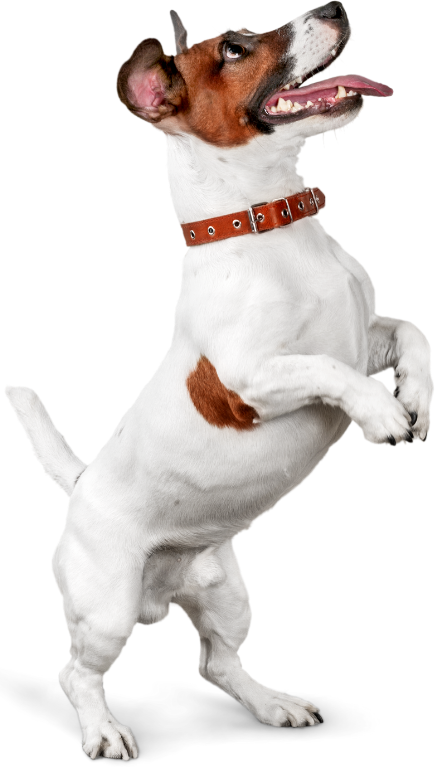When you get a new dog, whether a puppy or an adult rescue, she probably needs some obedience training. More specifically, a well-behaved pup must respond to seven directions to be a good canine citizen: sit, down, stay, come, heel, off, and number. Expert trainer Brandon McMillan, Emmy Award-winning host of Lucky Dog and author of Lucky Dog Lessons: Train Your Dog in 7 Days, calls these the "Seven Common Commands" because they're the ones most people will use with their pets on a regular basis. He teaches these training lessons to all of his rescue dogs, so they are safe and well-behaved, whether they spend most of their time in the backyard, at the dog park, or walking the neighborhood with their human companions. With a few 10-to-15-minute practice sessions each day, most pets can master this key skill in just a week or two.
1. Sit down
McMillan always teaches sit first because it is the most natural concept for most dogs. It is therefore one of the easiest for them to learn, so even pets new to training can pick it up within a few sessions. And because it's also a transition command, once the dog can sit, you can move on to other commands.
2. Lay down or down
McMillan compares his favorite dog training technique, the down, to removing the key from the ignition of a car. A standing dog can bolt like a running vehicle because there is nothing to hold it in place. A sitting dog is like a car in a park, but it's still easy to get out of. But while she is sleeping, you cut the engine. Because the command helps you control your dog, it's also a great transition to more complex tricks like the rollover or dead play.
3. Stay
A dog that knows how to stay won't run out into the street if it gets loose, so it's one of the most important skills any dog needs to learn. McMillan recommends teaching it when your puppy is tired and hungry so he's not too hyper to focus. And be patient: Most dogs take at least a few days to get the hang of Stay, and it can take several weeks to get the hang of it. But since it keeps your dog out of harm's way, keep a bag of treats or kibble handy and keep practicing until she's a pro.
4. Come
If you plan to take your dog anywhere off-leash, he needs to know how to come when called. It can keep her safe at the dog park if there's a fight, get her off the street if she breaks off her leash, or make sure she stays close while hiking or just frolicking in the backyard. McMillan teaches Come to Stay because the skill of Staying first makes the process easier.
5. Heel
Dogs of all sizes should learn to heel or walk calmly by your side, especially if you're exercising your pup in busy urban areas where there isn't much sidewalk space. This skill is even more important for large or strong pups who naturally pull on the leash. Once the dog knows how to pat, walks will be easier and more pleasant for your dog and the armpits.
6. Off
Jumping on visitors or furniture is one of the most common dog problems, so if your pooch can't keep all four paws on the floor, don't worry. Get her to stay off by turning her back to you when she jumps up, grabbing her paws, and shaking a plastic bottle full of pennies while you say "Off," suggests McMillan. All of these things discourage jumping, so try a few to see which handles with your pet.
7. No
Some trainers teach both No and Leave it for slightly different situations, such as using No when the dog shouldn't be doing something and Leave it when you want your puppy to not investigate a thing or situation. McMillan sticks to No, period to keep things simple. She says explaining the difference can confuse people and animals alike, so No is a good, catch-all command for anything you want your pup to stop doing.







